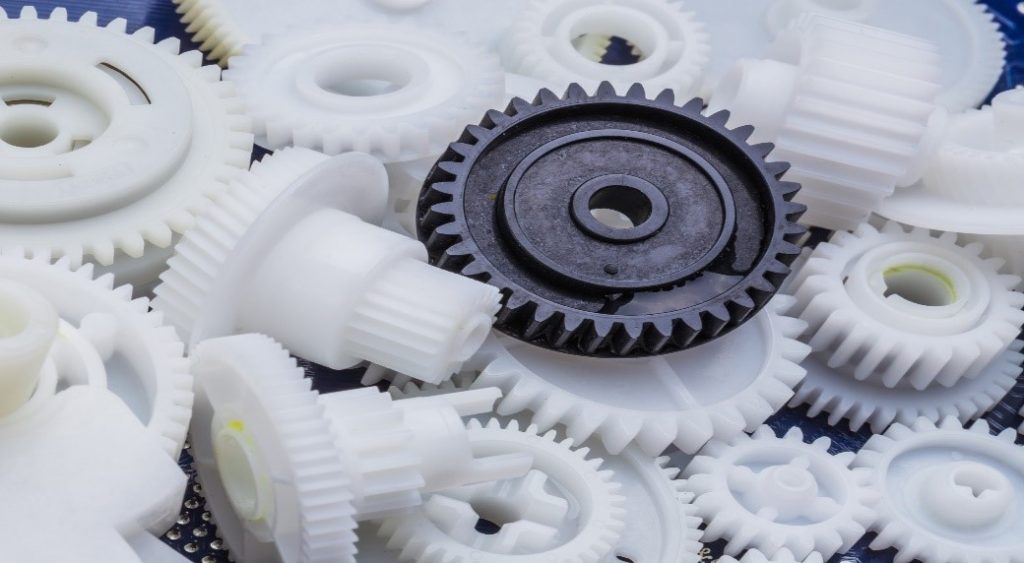This is a thought leadership article in our series looking at the future of 3D printing.
Paul Guillaumot is the founder and CEO of Spare Parts 3D, a start-up founded in June 2015 focusing on providing on-demand distributed 3D printing of spare parts for original equipment manufacturers.
Spare Parts 3D together with their qualified global network of production hubs, is working on simplifying spare parts inventory management by shifting physical warehouses into digital ones that can be accessed and produced anytime, anywhere. Paul Guillaumot has a background in Management Consulting and holds a Masters Degree in Mechanical and Industrial Engineering from Arts et Métiers ParisTech.
3D Printing – The Next 5 Years by Paul Guillaumot
In recent years, exciting news of new 3D printing technologies and applications are reported on an almost daily basis. Looking collectively at the emerging new capabilities of additive manufacturing, few can doubt that we are on the precipice of the fourth industrial revolution. Regardless of whether it will happen in the next five years, the adoption of additive manufacturing is sure to move beyond prototyping and gravitate towards end consumer use.
Commercialisation of 3D printing to leverage on on-demand capabilities.
Much discourse has been written on the cost saving function that 3D printing provides. Undeniably, the successful integration of any new technology is often deeply rooted in it. In certain applications however, this cost saving function arises directly from 3D printing’s on-demand production. This is attributed to 3D printers being able to print a multitude of various different parts without the need to change the hardware i.e. the 3D printer itself. As such, owning the right 3D printer allows you to have access to what you need whenever you need it. Implementing this into businesses whereby accessibility and availability is crucial will naturally translate to reduced costs.

One prime example would be the difficulty in managing spare parts inventory. As the demand for spare parts is completely unpredictable, there is no way to keep an optimal amount of inventory that minimises inventory costs and maximises part availability. Given the widespread relevance of spare parts ranging from appliance to automotive or aerospace industries, the market potential for incorporating 3D printing in spare parts management is simply staggering.

Gradual maturity for 3D printing metals.
While there is much excitement surrounding metals 3D printing, I believe that it is unlikely that we see metal 3D printing becoming mainstream within the next 5 years. High-level of requirements pertaining to metal industrial production such as dimensional accuracy, surface finish for fit assembly and mechanical behaviour prediction of 3D printed metal parts still requires technology development, cost reduction, as well as better understanding from the industrialist to get widely adopted.
Hence, just as plastic 3D printing has evolved a lot within the last 7 years after the key patents became public, the metal 3D printing ecosystem will certainly need some time to mature and improve to find out its next application niches.
Achieving consistency & standardization in quality.
As 3D printing is relatively new in being used for production of end-use products, there has yet to be an established quality standard for 3D printed parts.
This is sorely needed for two main reasons:
- First, to accelerate the spread of 3D printing to new products. Indeed, as 3D printing is particularly valuable for production small customized production volumes, it is key to lower the investment cost related to the two key steps required before production: industrialisation and qualification.
- Secondly, because it is a key enabler to effectively deploy a uniform distributed production, leveraging at most the 3D printing capabilities, while having the ability to ensure product quality.
Towards subsidiary processes automation.
Finally, if current additive manufacturing processes continues to be more optimised, upstream processes – from 3D modelling to printing – and even more downstream processes – physical parts support removal, curing, post-processing, finishing, etc. – still requires a lot of development for getting standardized, automatized and better integrated.
Creating a seamless workflow from design to finished product shall be the next objective of our industry to open more opportunities for the use of 3D printing. I hope we will see major developments of the auxiliary processes in the coming 5 years.
You can find out more about Spare Parts 3D here.
If you want to give us your perspective on the future of 3D printing then email us now.
For more 3D printing insights and analysis, subscribe to our free newsletter and follow our active social media accounts.
Read more about the future of 3D printing in the 3D Printing Industry thought leadership series.



